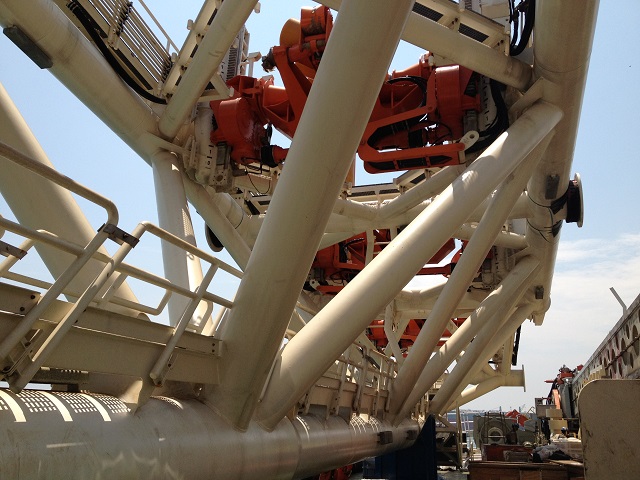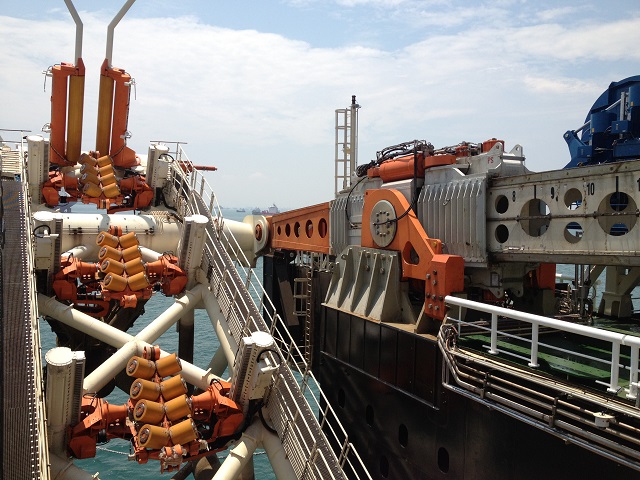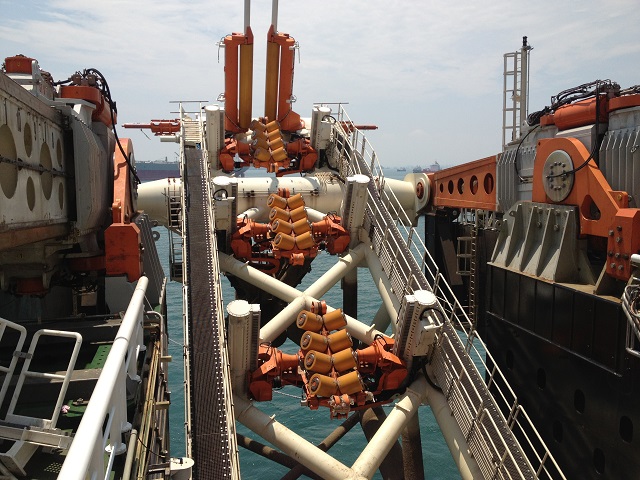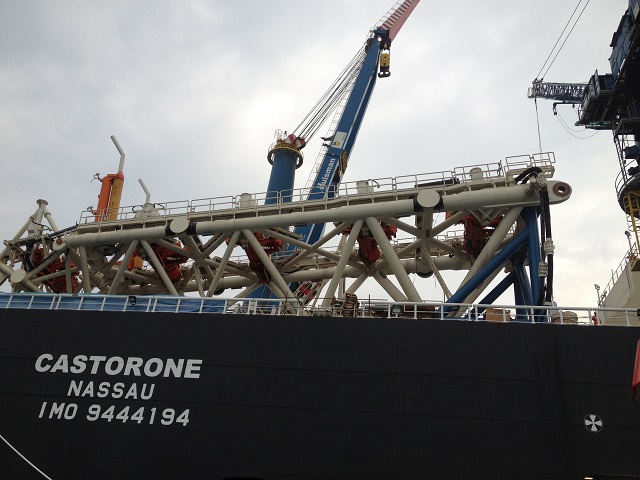Castorone Put to Work in Australia
The INPEX-operated Ichthys LNG Project in Australia has started the deepwater pipelay for its 889km-long gas export pipeline using Saipem’s deepwater installation vessel Castorone.
Operations commenced on February 6, and the vessel will lay the remaining 718km offshore section of the 42-inch diameter pipeline following the successful completion in November 2014 of the 164km shallow water section by the SEMAC-1. The remaining 7km of the pipeline is onshore.
Gas from the Ichthys field will undergo preliminary processing offshore to remove water and raw liquids, including condensate. The gas will then be exported to the onshore processing facilities in Darwin via the pipeline.
Deepwater pipelay is scheduled for completion in late 2015. When completed, the Ichthys LNG Project GEP will be the fifth longest subsea pipeline in the world and the longest in the southern hemisphere.
Castorone Construction
Castorone is a DP3 ice-class vessel built in Yantai Raffles in China and fitted out in Singapore by Keppel Shipyard and Keppel Singmarine. It was delivered to Saipem in 2013 and started work for the first time in the Gulf of Mexico.
Navalimpianti Tecnimpianti Group designed the pipe handling and storage system, and ship design company Navalprogetti assisted with engineering during the completion phase. Resistance and propulsion tests were carried out at Krylov Shipbuilding Research Institute in Russia.
Pipelay Capabilities
The vessel, designed to transit at speed up to 13 knots, can swiftly mobilize around the world. The 330m vessel’s pipelaying capacity means it can move from ultra-deep to shallow waters simply be adapting the stinger configuration. It is capable of laying up to 60 inch pipes in S-lay mode or up to 36 inch pipes in J-lay mode. A unique J-lay tower has a capacity of 2,500t, so Castorone can carry out pipeline and trunkline operations in water depths down to 3,000m.
The 120m long stinger extends from the stern of the vessel and is made up of three articulated and adjustable sections that support the pipe as it is moved into the water. Engineering company HGG cut over 300 pipes of various diameters for the construction of the stinger.

that matters most
Get the latest maritime news delivered to your inbox daily.
The Ichthys LNG Project is expected to produce 8.4 million tons of LNG and 1.6 million tons of LPG per annum, along with approximately 100,000 barrels of condensate per day at peak. Detailed engineering, procurement and construction of the Ichthys LNG Project is ongoing and production is scheduled to commence by the end of 2016. The Ichthys LNG project has an expected operational life of at least 40 years.




